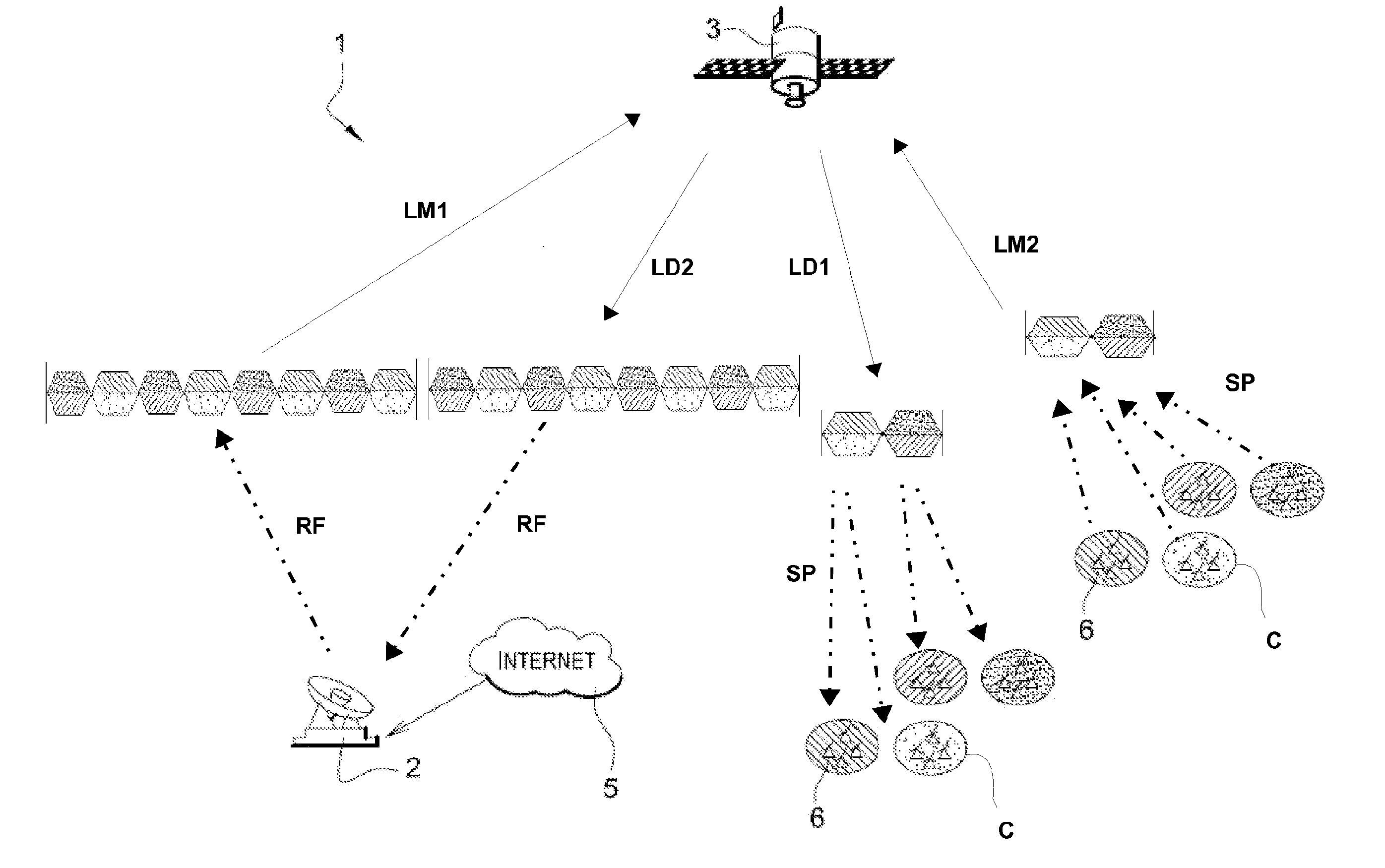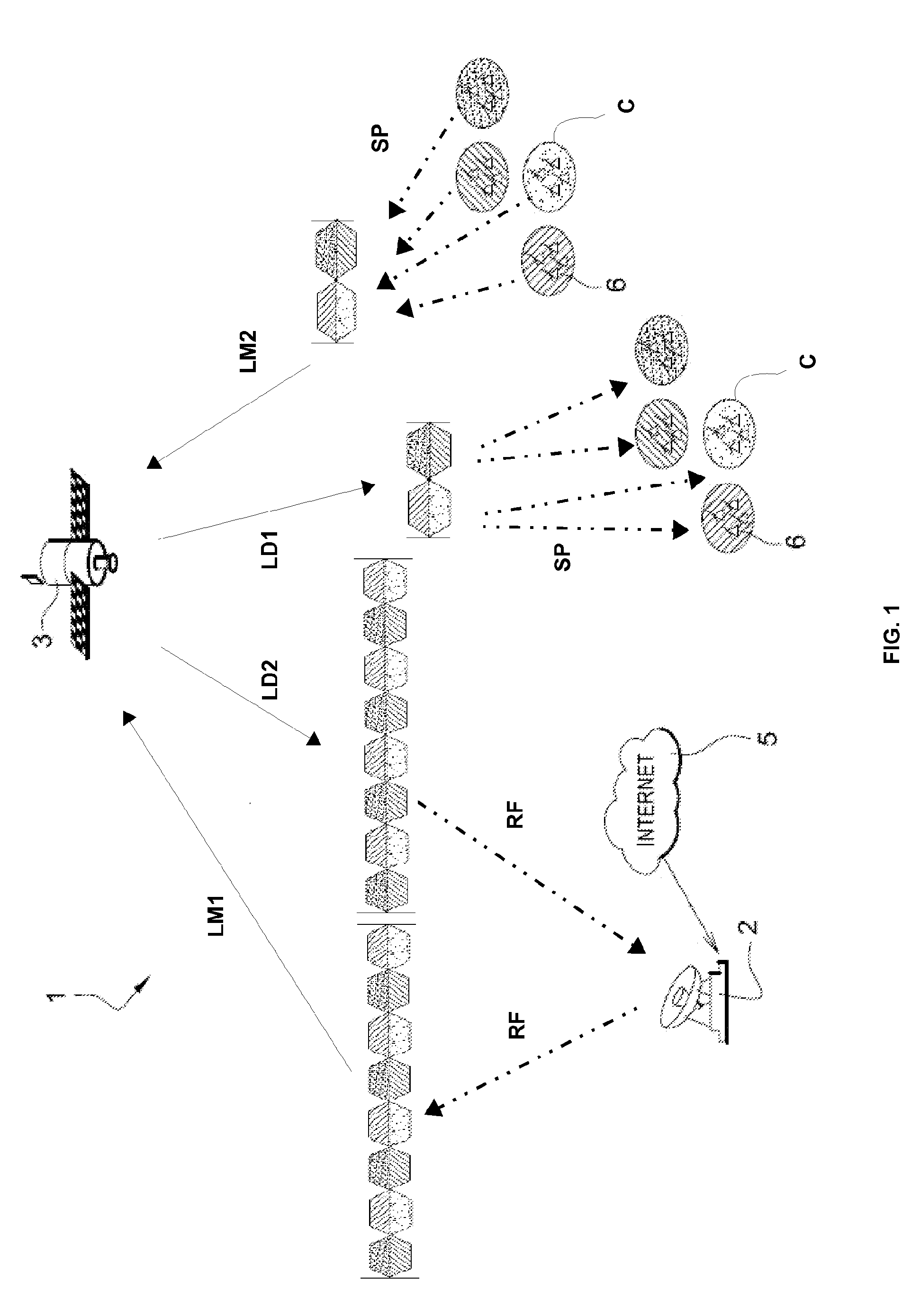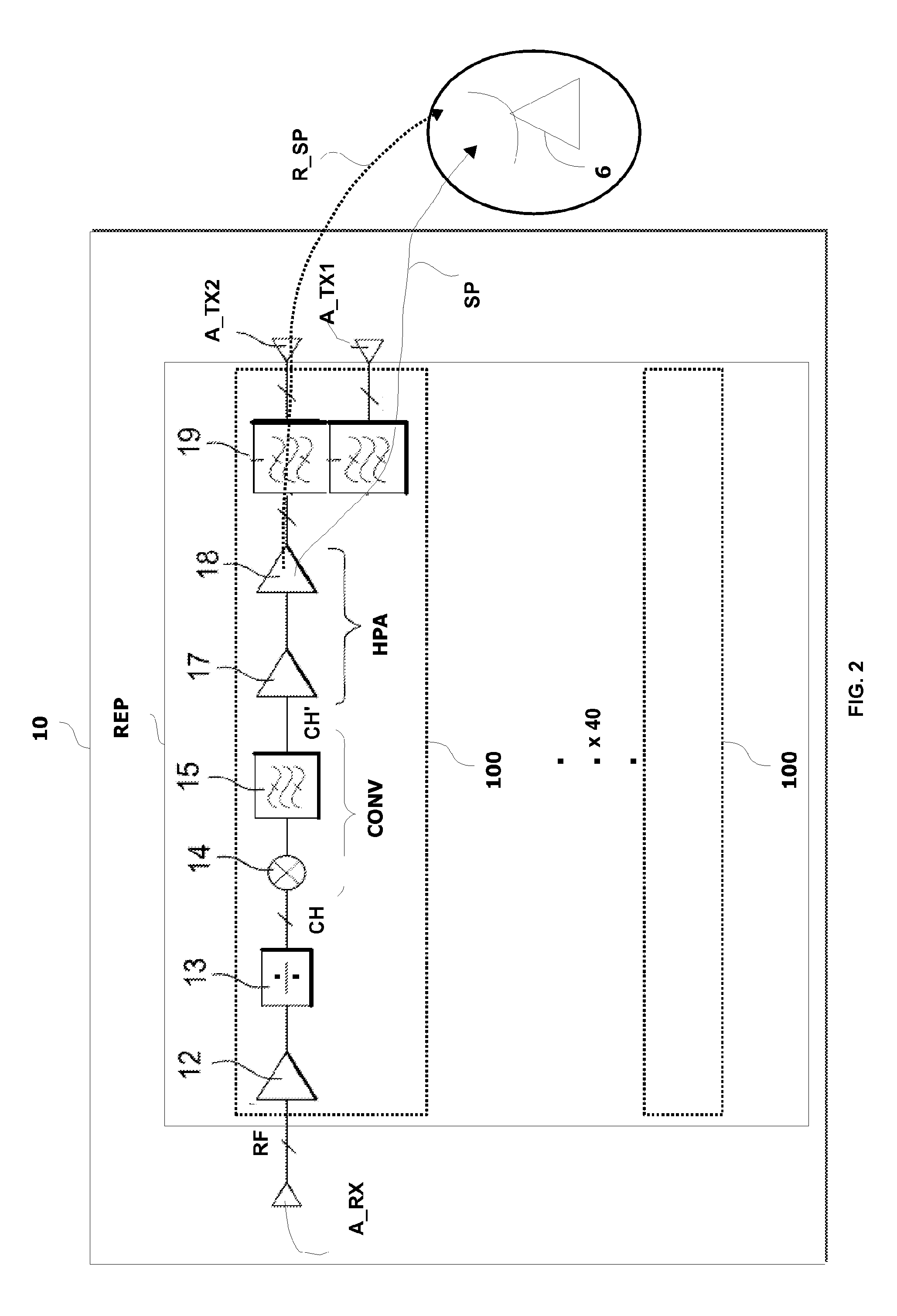Payload for a multi-beam satellite
a payload and satellite technology, applied in the field of forward link payloads for multibeam satellites, can solve the problems of unoptimized frequency re-use patterns and significant increase in the and achieve the effect of reducing the dry mass of multibeam satellites and reducing the number of chains used
- Summary
- Abstract
- Description
- Claims
- Application Information
AI Technical Summary
Benefits of technology
Problems solved by technology
Method used
Image
Examples
case a
[0182) C33 and C13
[0183]In the case of external spatial isolation of a half-cell (Dc=0.5), a terrestrial terminal 6 positioned in a green cell, cell C33 for example, will receive:[0184]a first regenerated radiofrequency signal SP33 destined for said green cell; and[0185]a signal replica R_SP33 filtered by the primary lobe Lb1′ of the radiation of the antenna which transmits in the direction of the non-adjacent red cell C13.
[0186]The replica of the signal R_SP33 will be filtered by this primary lobe Lb1′ instead of by the main lobe Lb0′. Filtering (rejection of the filter) is thus more substantial and therefore the replica of the signal received by the terminal 6 for which the regenerated radiofrequency signal SP33 is destined will be weaker.
[0187]Thus, in the case of external spatial isolation of half cell diameter, if the terminal 6 is located next to the cell and is at a border frequency F2 (described, further below) of a channel CH′, the reduction in the multi-path effects will b...
case b
[0188) C33 and C11
[0189]In the case of external spatial isolation of 1.3 times cell diameter (Dc=1.3), a terrestrial terminal 6 positioned in a green cell, cell C33 for example, will receive:[0190]a first regenerated radiofrequency signal SP33 destined for said green cell; and[0191]a signal replica R_SP33 filtered by a secondary lobe Lb2′ of the radiation of the antenna which transmits in the direction of the non-adjacent red cell C11.
[0192]The replica of the signal R_SP33 will be filtered by this secondary lobe Lb2′ instead of by the main lobe Lb0′ or the primary lobe Lb1′. Filtering (rejection of the filter) is thus more substantial and therefore the replica of the signal received by the terminal 6 for which the regenerated radiofrequency signal SP33 is destined will be weaker.
[0193]Thus, in the case of external spatial isolation of cell diameter Dc=1.3, if the terrestrial terminal 6 is located next to the cell and is at a border frequency F2 (described further below) of a channel...
case c
[0194) C33 and C36
[0195]In the case of external spatial isolation of 1.6 times cell diameter (Dc=1.6), a terrestrial terminal 6 positioned in a green cell, cell C33 for example, will receive:[0196]a first regenerated radiofrequency signal SP33 destined for said green cell; and[0197]a signal replica R_SP33 filtered by a secondary lobe Lb2′ of the radiation of the antenna which transmits in the direction of the non-adjacent red cell C36.
[0198]The replica of the signal R_SP33 will be filtered by this secondary lobe Lb2′ instead of by the main lobe Lb0′ or the primary lobe Lb1′. Filtering (rejection of the filter) is thus more substantial and therefore the replica of the signal received by the terminal 6 for which the regenerated radiofrequency signal SP33 is destined will be weaker.
[0199]Thus, in the case of external spatial isolation of cell diameter Dc=1.6, if the terrestrial terminal 6 is located next to the cell and is at a border frequency F2 (described further below) of a channel...
PUM
 Login to View More
Login to View More Abstract
Description
Claims
Application Information
 Login to View More
Login to View More - R&D
- Intellectual Property
- Life Sciences
- Materials
- Tech Scout
- Unparalleled Data Quality
- Higher Quality Content
- 60% Fewer Hallucinations
Browse by: Latest US Patents, China's latest patents, Technical Efficacy Thesaurus, Application Domain, Technology Topic, Popular Technical Reports.
© 2025 PatSnap. All rights reserved.Legal|Privacy policy|Modern Slavery Act Transparency Statement|Sitemap|About US| Contact US: help@patsnap.com



